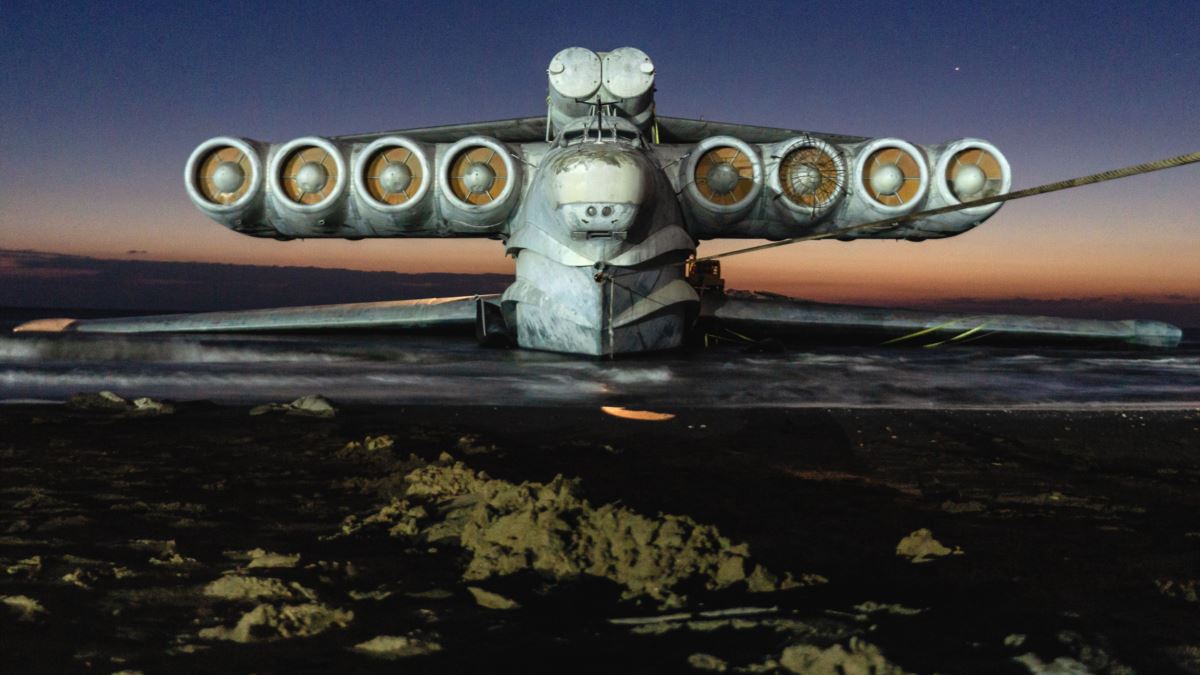
This is the Lun-class ekranoplan, a formerly top-secret Soviet naval vessel that could skim just above the waves at jet-plane speeds, evading radar and anti-ship mines.

The vehicle was equipped with six launchers along its spine that could fire nuclear missiles powerful enough to destroy an aircraft carrier.

The vehicle made use of the so-called “ground effect” — a cushion of high pressure that forms under the wings of extremely low-flying aircraft, boosting speed and lift. Wave-skimming seabirds can often be seen utilizing the same phenomenon.

After the collapse of the U.S.S.R. and subsequent end of the Lun program, the “aircraft carrier killer” sat idle on this tightly guarded dock on the coast of Russia’s Daghestan region.

This summer, Russian urban explorer Lana Sator, 31, read about the ekranoplan being towed by sea to Derbent, a city in Daghestan, where it is due to be moved into a “patriotic park” and put on permanent display.
With the ekranoplan lolling in the waves awaiting its final transport to the military theme park, Sator told RFE/RL she booked a last-minute, $150 flight from her base in Moscow to Daghestan.

At around 1 a.m. on the morning of August 7, Sator and a friend stuffed cameras into watertight bags, walked along the moonlit coast, then waded through the waves toward the vehicle. Around the wing, Sator says the sea had scooped out “a deep hole in the sand” but the pair eventually managed to clamber on board and peer inside the vessel’s open door.

Inside the entrance, Sator says “light bulbs were on and a generator was humming very loudly.” Then they saw a security guard.

Somehow the guard was sleeping through the generator’s din. With the noise covering their footsteps, Sator and her companion — both dripping with seawater — were able to sneak past him and into the belly of the Soviet beast.

The pair headed away from the guard and into the rear of the vessel, then unbagged their cameras and flashes and got to work.

Sator says she was more excited than scared as they crept undetected through the dimly lit compartments. The vessel swayed gently in the waves like a boat.

After nearly an hour exploring the rear of the ekranoplan, the pair again tiptoed past the slumbering guard and made their way to the front where Sator was able to photograph the airplane-like control room.

Finally, at about 3 a.m., with scores of photos on their cameras, the pair once more passed the guard — who they noticed had turned over in his sleep — and stepped off the wing into the warm seawater, which by then was deep enough that they plunged unexpectedly in over their heads.
After getting safely to shore and later watching the oblivious guard emerge from the craft to stretch and yawn at the sunrise, Sator said her mission could “be considered accomplished.”


